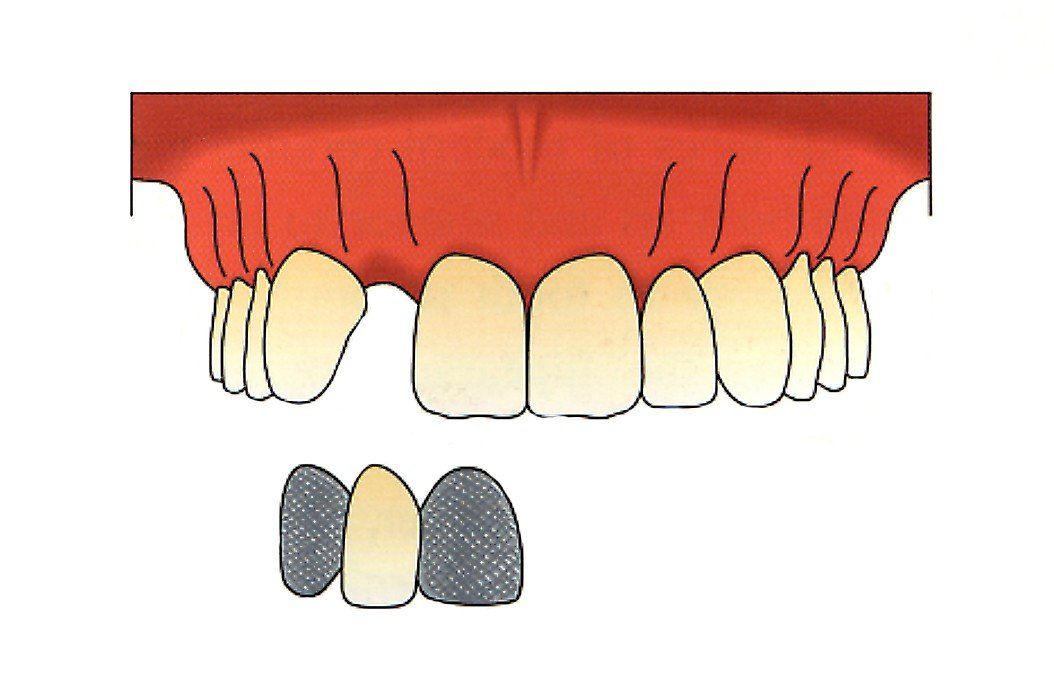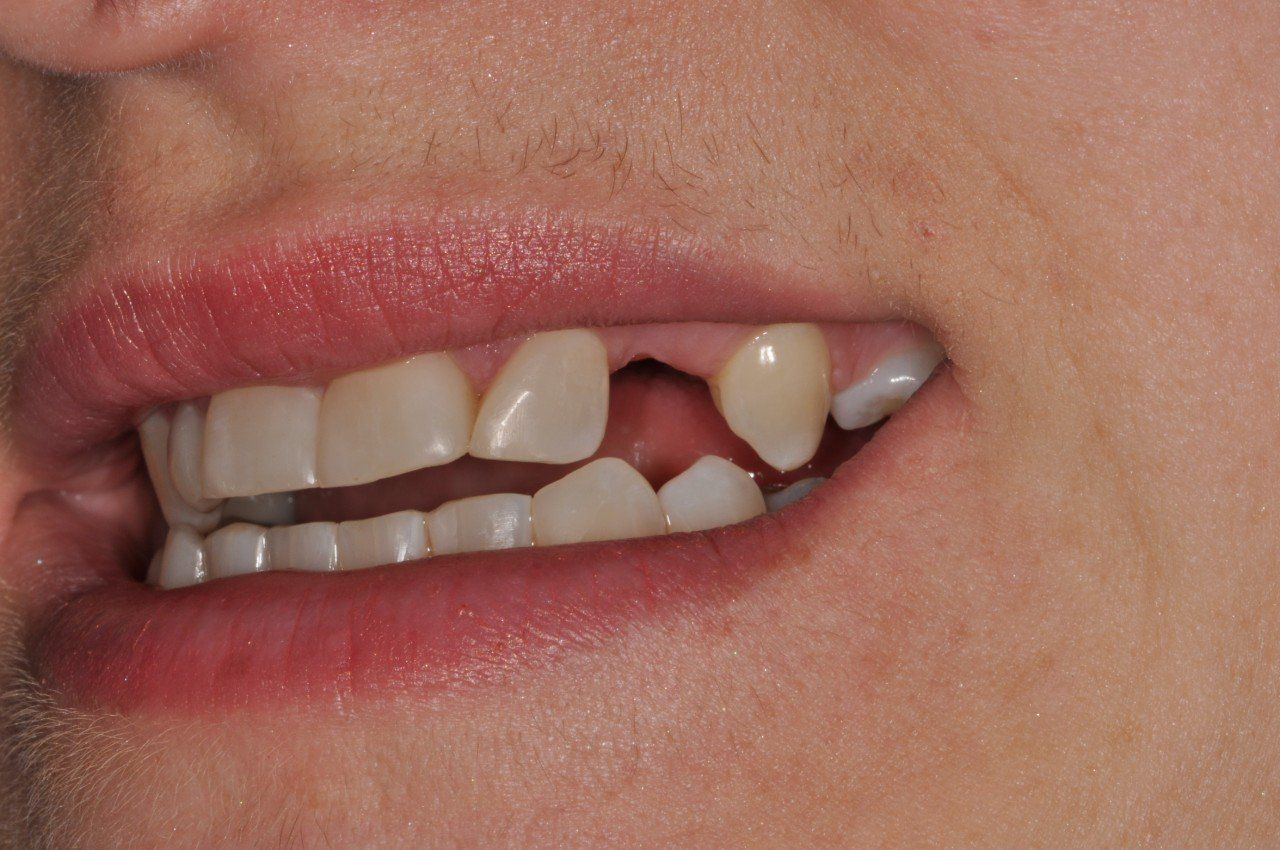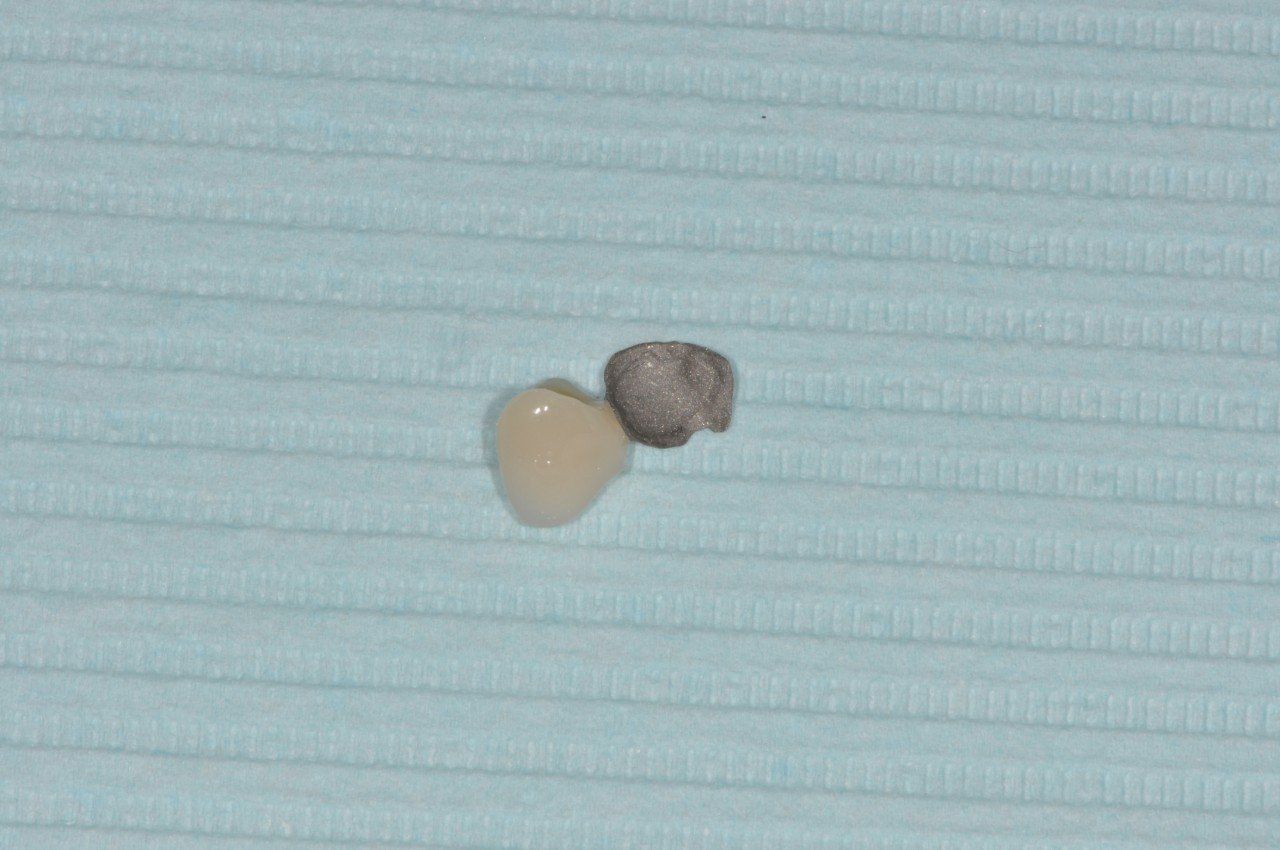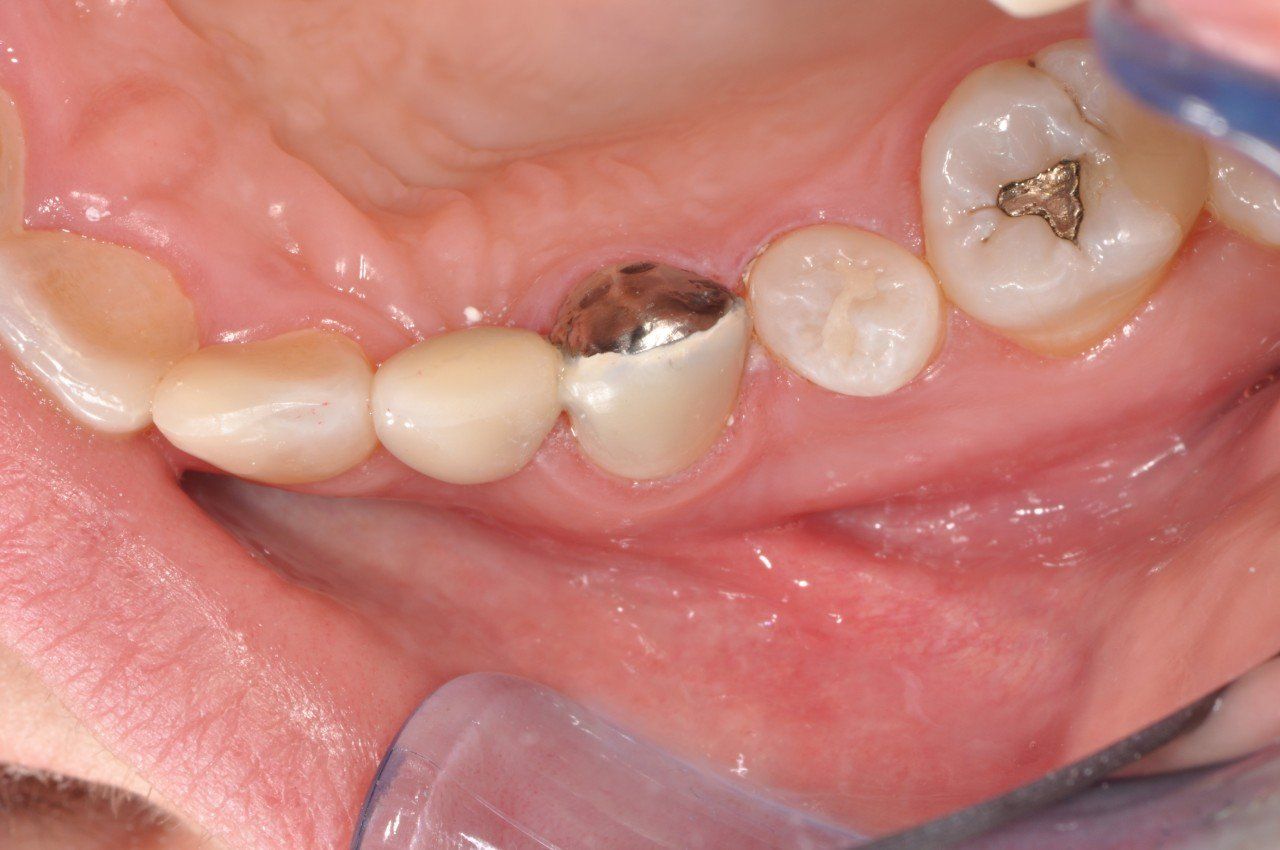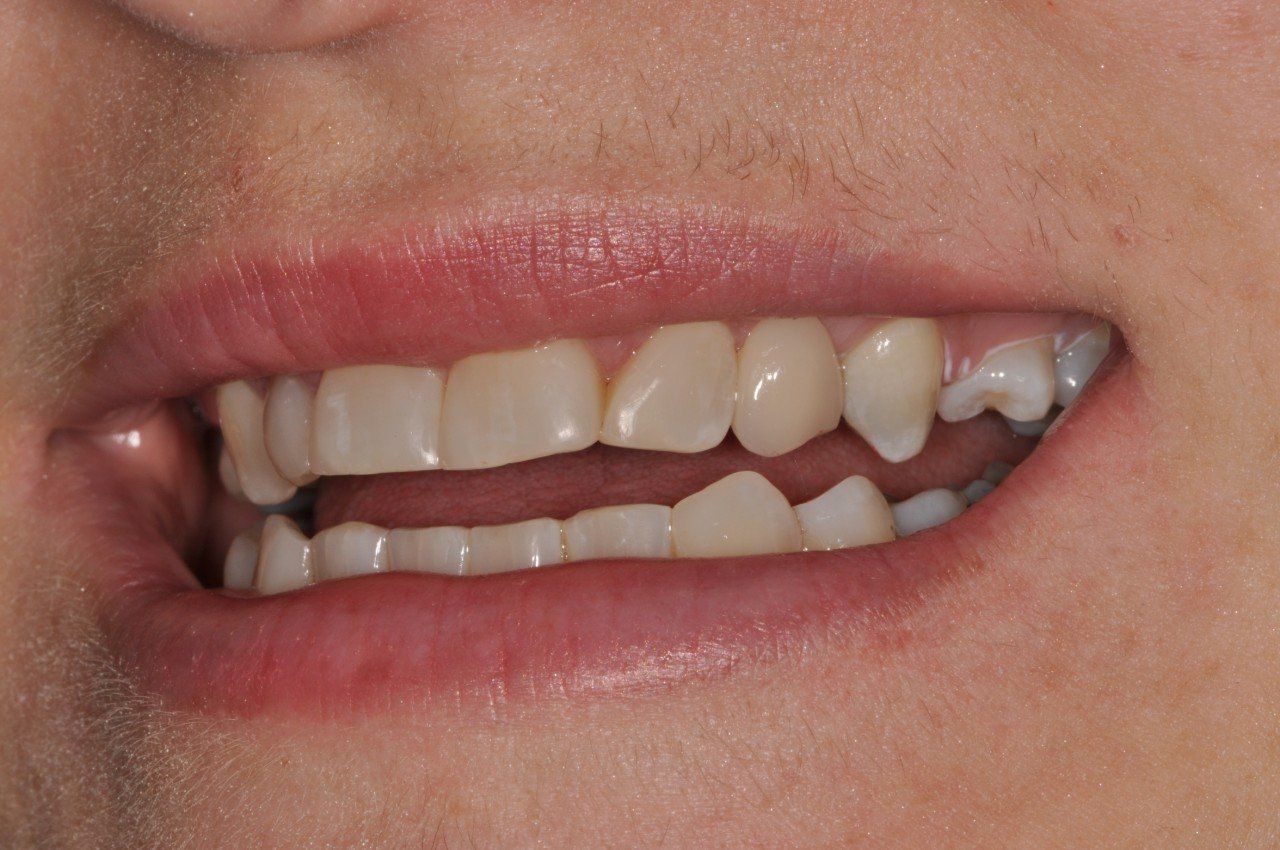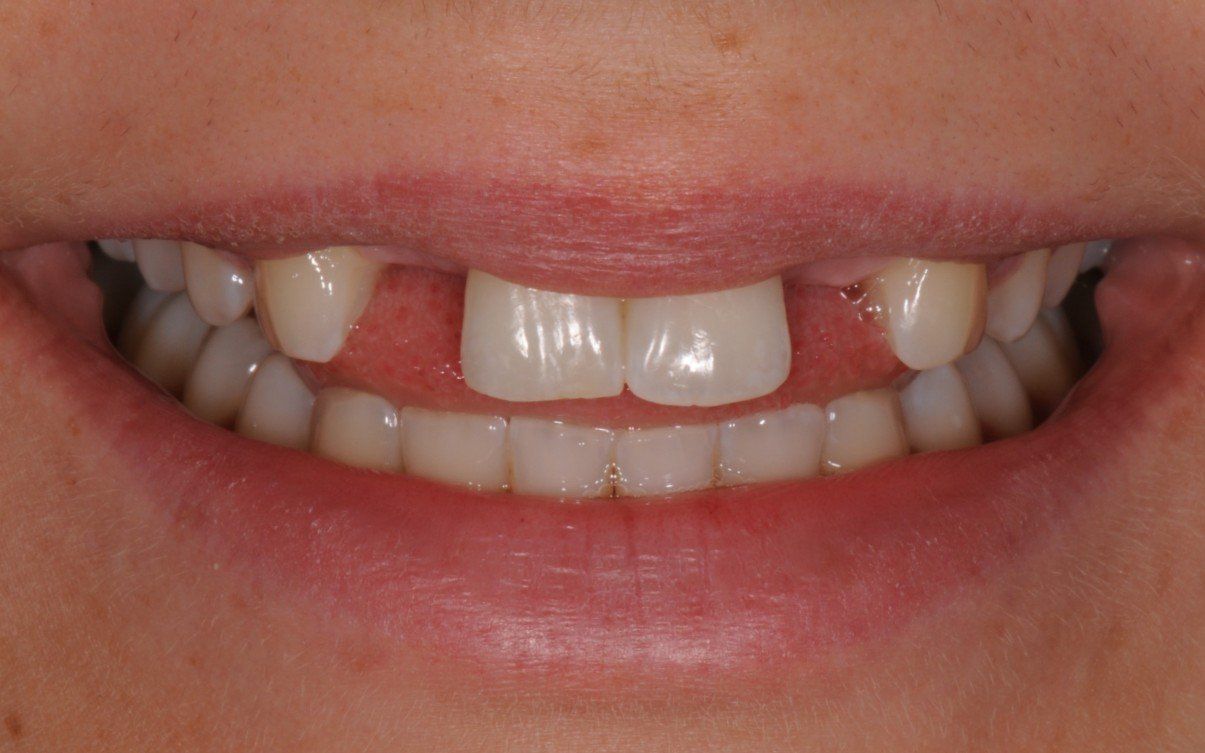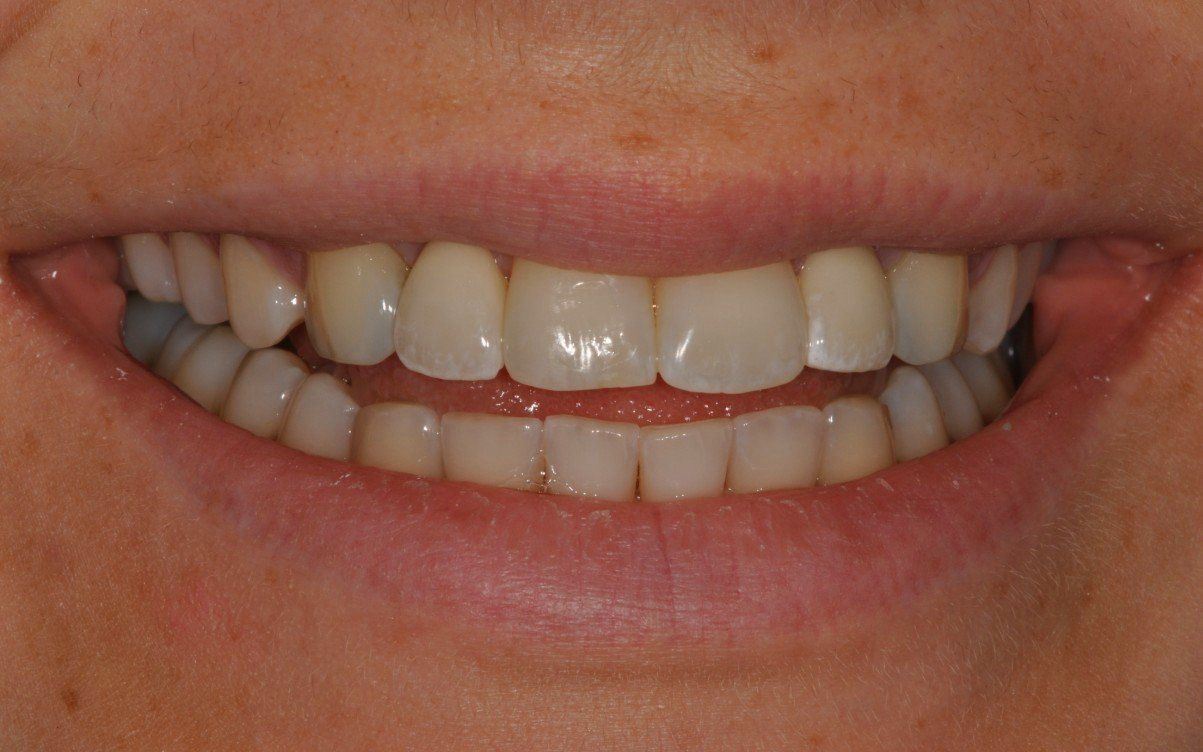RESIN BONDED BRIDGES
Resin bonded bridges use modern bonding techniques to replace missing teeth with little or no drilling of the supporting teeth.
What is a resin bonded bridge?
There are several different typed of resin bonded bridge, but the principle of each is the same. A prosthetic tooth is bonded onto an adjacent tooth or teeth, to fill the missing tooth space. The prosthetic tooth may be either:
- a patient’s natural tooth that has been extracted and reshaped to remove the root.
- a composite tooth made chairside, in the surgery.
- a porcelain tooth with metal wings, made by a technician in the laboratory (sometimes called a Maryland bridge).
Advantages
- Aesthetics: Resin bonded bridges are designed to match the colour, shape, and size of your natural teeth, providing a natural and attractive look and feel.
- Conservative preparation: One significant advantage of a resin-bonded bridge is that it requires minimal preparation of the adjacent teeth. Unlike traditional dental bridges, which involve significant reduction of the neighboring teeth, a resin-bonded bridge requires minimal or no enamel removal. This preserves the natural tooth structure and maintains the long-term health of the adjacent teeth.
- Non-invasive procedure: The placement of a resin-bonded bridge is generally a non-invasive procedure, as it does not require extensive drilling or anesthesia in most cases.
- Quick and efficient: The process of getting a resin-bonded bridge is usually quicker compared to other tooth replacement option. It typically involves minimal laboratory work. , and the bridge can often be placed in a single dental visit, or just two visits if laboratory work is required.
- Stability: Resin bonded bridges are fixed in place and are stable within the mouth. They do not require removal for cleaning or maintenance.
- Affordability: Resin-bonded bridges are generally more affordable compared to dental implants or traditional bridges. Since the procedure is less complex and requires fewer materials, it can be a more cost-effective option for patients with a limited budget.
Disadvantages
- Limited application: Not all spaces can be filled by a resin-bonded bridge. It is primarily used to replace missing front teeth or teeth with minimal biting force. The strength and durability of the resin-bonded bridge may not be sufficient for areas of the mouth with higher chewing forces, such as molars. If the teeth on either side of the gap are crooked, heavily filled or too short or if there is a deep bite then an alternative may have to be found.
- Aesthetics: If there is significant gum missing, it is difficult to replace this with fixed bridge work, while maintaining a bridge that is aesthetic and easy to clean. If the teeth on either side of the gap are too thin the metal backing may not be completely masked out.
- Potential for debonding: While resin-bonded bridges can provide a good aesthetic result, they may have a higher risk of debonding compared to other dental restorations. The bond between the bridge and the adjacent teeth may weaken over time, especially if proper oral hygiene and maintenance are not followed. If the bridge becomes loose or detaches, it will require re-cementation or replacement.
Longevity and Cost
We expect a resin bonded bridge to last at least 10-12 years. When they fail, they simply come unstuck and can often be rebonded.
The cost is approximately $2400 for a single tooth.
What is involved?
- Any existing decay and gum problems are treated.
- Sometimes a very thin groove is made in the tooth to help locate the bridge during bonding. Sometimes, if there is sufficient space, no drilling at all is required. Because so little drilling is involved local anaesthetic may not be necessary.
- An impression is taken to provide an exact model of the prepared teeth.
- The bridge is constructed in a laboratory by our technician. To get the best aesthetics, the technician will sometimes make a consultation appointment with the patient to choose the best colour, shape, and any characterisation.
- At the next visit, 2-3 weeks later, the bridge is tried in the mouth for proper fit, shape and colour.
- Any adjustments are made and the bridge is bonded in place.
Replacing a missing canine tooth
Replacing missing lateral incisors in a young patient
1. This patient is missing her lateral incisor teeth, a problem in 1.9% of the population. Resin bonded bridges are a great option as they move with the adjacent teeth as a person grows.
2. The metal wings of the bridges were bonded on to the back of the canine teeth, out of sight. The porcelain teeth look very natural.
Wellington CBD Location
© 2024
Discover Dental
Contact
04 472 3510

